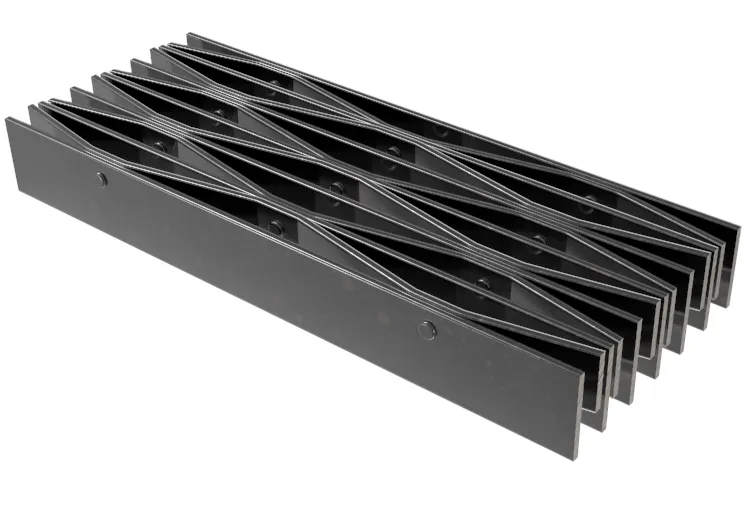- Industrial zone, South of Anping Town, Hengshui, Hebei, China.
- sales@hfpetromesh.com
- +86-18931809706
Exploring the Benefits of Perimeter Netting for Enhanced Security and Protection
The Importance of Perimeter Netting in Security Management
In today’s world, where security threats are increasingly complex and prevalent, organizations are continually seeking innovative solutions to enhance their protective measures. One of the critical strategies employed in securing premises is perimeter netting. This method involves the installation of netting structures around an area to deter unauthorized access, protect against environmental hazards, and maintain the integrity of a secure environment.
Understanding Perimeter Netting
Perimeter netting refers to the use of durable mesh-like materials, typically made of synthetic fibers or wire, to create a physical barrier around a designated area. This netting is often used in various settings, including sports fields, construction sites, wildlife reserves, and even military installations. The primary purpose is to prevent intrusions by people or animals, thereby safeguarding valuable assets, maintaining operational continuity, and ensuring the safety of individuals within the confined space.
Deter and Prevent Unauthorized Access
One of the primary functions of perimeter netting is its ability to deter unauthorized access. By creating an imposing barrier, netting can significantly reduce the likelihood of trespassers entering a facility. This is especially crucial for businesses that store sensitive materials or have high-value assets. Perimeter netting acts as a first line of defense, making it more challenging for potential intruders to approach a site unnoticed.
Moreover, the visibility of netting can act as a psychological deterrent. Knowing that an area is protected by a robust barrier may discourage potential intruders from even attempting to breach the perimeter. For organizations, this can lead to a reduction in theft, vandalism, and other forms of criminal activity.
Environmental Protection and Safety
perimeter netting

Apart from deterring intruders, perimeter netting serves an essential role in protecting the surrounding environment. In agricultural settings, netting can keep wildlife out of crop fields, minimizing damage to plants and maintaining productivity. Similarly, in construction sites, netting can protect the site from debris falling onto public spaces, thereby reducing the risk of injury to passersby.
In addition, perimeter netting can help contain hazardous material spills, preventing contaminants from spreading beyond the designated area. This is especially vital in industrial and manufacturing settings, where adherence to environmental regulations is crucial. By doing so, organizations not only protect their immediate surroundings but also contribute to broader environmental conservation efforts.
Enhancing Security Protocols
Perimeter netting can be integrated with advanced security systems to enhance overall security protocols. For instance, netting can be equipped with sensors that alert security personnel when unauthorized movement is detected. This combination of physical barriers and technological solutions creates a comprehensive security framework that can respond quickly to potential breaches.
Furthermore, perimeter netting is often more cost-effective than other security measures, such as erecting walls or installing complex electronic fencing systems. Its installation can be customized to fit various geographical landscapes and site specifications, making it a versatile option for a wide range of applications.
Conclusion
In conclusion, perimeter netting is an invaluable tool in modern security management. Its ability to deter unauthorized access, protect the environment, and integrate with technological security systems makes it a preferred choice for organizations seeking to bolster their security measures. As threats continue to evolve, investing in effective perimeter solutions like netting will be crucial for ensuring safety and maintaining operational integrity in both urban and rural settings. Whether for commercial, industrial, or recreational use, perimeter netting stands at the forefront of proactive security strategies.
-
The Power of Pyramid Shaker Screen - A 3-Dimensional SolutionNewsOct.24,2024
-
Exploring the Versatility and Durability of Steel GratingNewsOct.24,2024
-
Revolutionizing Drilling Efficiency with Steel Frame Shaker Screens for Mud Shale ShakersNewsOct.24,2024
-
Potential of Shale Shaker ScreensNewsOct.24,2024
-
Offshore Pipeline Counterweight Welded Mesh - Reinforced Mesh in Marine EngineeringNewsOct.24,2024
-
Revolutionizing Offshore Pipeline Stability with Concrete Weight Coating MeshNewsOct.24,2024
